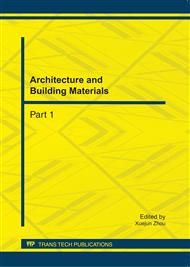p.420
p.426
p.433
p.440
p.444
p.457
p.462
p.466
p.471
Modelling Long-Term Bridge Deterioration at Structural Member Level Using Artificial Intelligence Techniques
Abstract:
Efficient use of public funds for structural integrity of bridge networks requires an effective bridge asset management technology. To achieve this, a reliable deterioration model is essential in any Bridge Management System (BMS). The deterioration rate is calculated based on historical condition ratings obtained from the structural element-level bridge inspections. Although most bridge authorities have previously conducted inspection and maintenance tasks, these past inspection records are incompatible with what are required by a typical BMS as input. Such incompatibility is a major cause for the deficiency of the current BMS outcomes. Artificial Intelligence (AI)-based bridge deterioration model has recently been developed to minimise uncertainties in predicting deterioration of structural bridge members (e.g. beams, piers etc). This model contains two components: (1) using Neural Network-based Backward Prediction Model (BPM) to generate unavailable historical condition ratings; and (2) using Time Delay Neural Network (TDNN) to perform long-term performance prediction of bridge structural members. However new problems have emerged in the process of TDNN prediction. This is because the BPM-generated condition ratings are used together with the actual condition ratings. The incompatibility between the two sets of data produces unreliable prediction outcomes during the TDNN process. This research is thus to develop a new process based on the existing method, thereby overcoming the abovementioned problems. To achieve this, the actual overall condition ratings are replaced by the BPM forward predicted condition ratings. Consequently, the outcome of this study can improve accuracy of long-term bridge deterioration prediction.
Info:
Periodical:
Pages:
444-453
Citation:
Online since:
September 2011
Authors:
Price:
Сopyright:
© 2011 Trans Tech Publications Ltd. All Rights Reserved
Share:
Citation:


